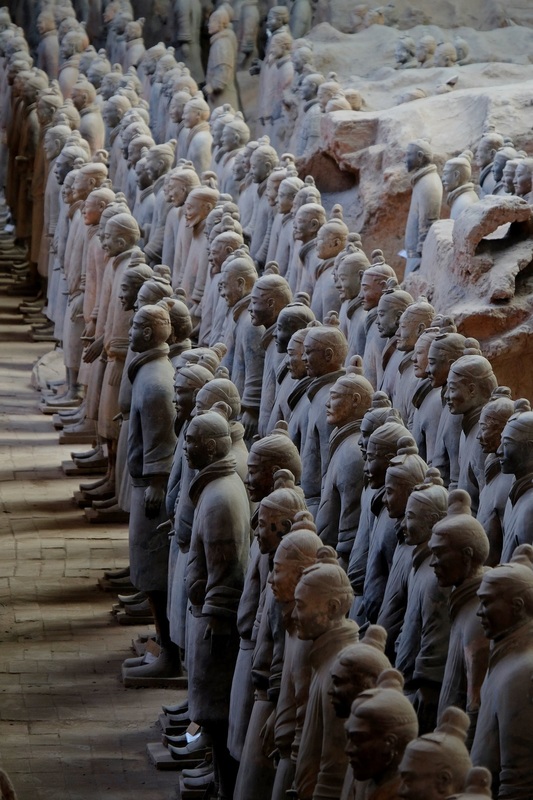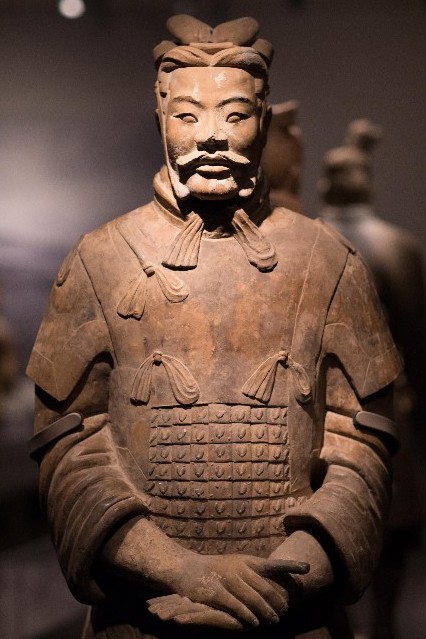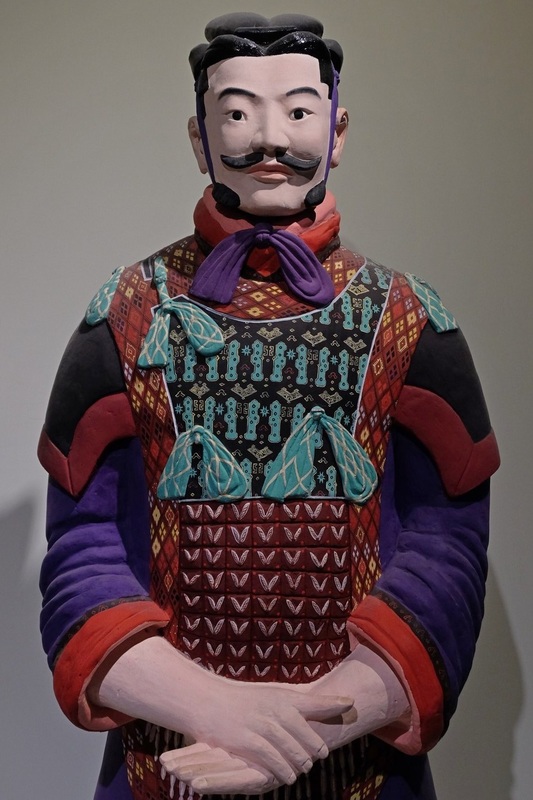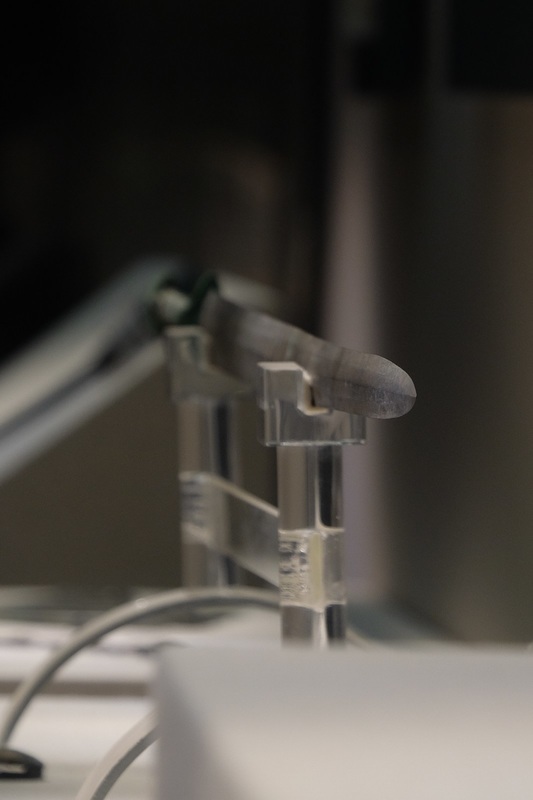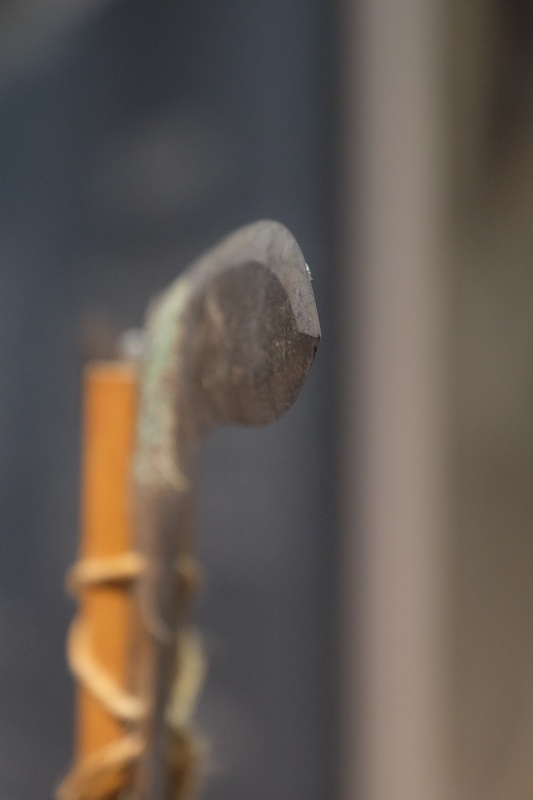T plus 11 - Xi'an
Ok, I'm not going to post many pictures of the warriors, and write about their history. There are plenty of online resources for this. Instead, I thought I'd dive into the science-y bit, and reconnect a little with my chemistry roots.
The non-nerds amongst you can switch off now...
Let's ease into this gently. First-up is how amazingly unique every single warrior is. Few non-montage photographs convey this well, but the angle below really illustrates it.
In the modern context, it's like asking a Toyota production line to produce 8,000 different models - different colour schemes, engines, wheels, interior upholstery etc - and keep the quality to an unerringly high standard - a nightmare today even with the advances in manufacturing made in two millennia. We have Lean, Six Sigma, ISO, TQM and other quality systems in place today, but the Chinese take the cake for figuring this out so long ago.
Ok, lets get the naturally occurring ones out of the way
RED - found in naturally occurring crystalline mercury sulphide (HgS) or more commonly known as Cinnabar. HgS is actually pretty toxic stuff, so it's no longer used as a dye or colouring agent.
BLUE - found in naturally occurring copper carbonate (Cu3(CO3)2(OH)2) crystals. Also known as Azurite.
GREEN - found in naturally occurring Malachite, also a form of copper carbonate (Cu2CO3(OH)2). Malachite is chemically very similar to Azurite and is often found together.
WHITE - made by burning bone which becomes white ash! Unsurprisingly, the colour is commonly known as bone white.
BLACK - again, made by burning organic material and collecting the carbon which results.
The mystery of Chinese Purple:
PURPLE - sorry, you can't get the brilliant purple used by the Qin dynasty artists by combining red and blue like what we learnt in 6th grade art class. This is the one which scientists can't figure out even today. The purple pigment which was used at the time is synthetic in nature i.e. it does not occur naturally. And the "recipe" for making Chinese Purple has been long lost. Its chemical formula is BaCuSi2O6 which is very similar to the silicate (CaCuSi2O6) used by the Egyptians to create the blue pigment. The only difference is that Barium is used in place of Calcium (both are in the same elemental group in the periodic table). Theorists suggest that this "technology" could have been transmitted along the Silk Road, but there are an equal number of people which argue for the case of independent Chinese invention.
The metallurgy behind the weapons of the Terracotta Warriors
Thirdly and finally, and to me, most phenomenal of all, how did the weapons stay in pristine (and lethal) conditions after 2,000 years of being exposed to the elements. Even modern day "stainless steel" knives and cookware oxidise after a while. Although I'd put this down to inferior manufacturing processes. Still, the weapons found with the Warriors are about 2,000 years ahead of their time.
Further analysis has revealed that some of the weapons have a chrome oxide coating of about 10-15 microns thick. Which would lead to the assumption that the Chinese learnt how to chrome-plate their metal tools way before chrome plating was actually discovered by German scientists in 1930!
Not so fast. Modern chrome plating techniques actually uses electrolysis or electro-plating. This would have been impossible at the time. So how did they do it? There are so many theories out there, but the most plausible one in my view is that they used a Chromium bath which formed a thin film over the bronze metal of the weapons. To do this, they would have had to isolate chromium from its ore, iron chromium oxide (FeCr2O4), and to do this would involve a complex multi-step oxidation and double reduction process using Silicon and Aluminium. After the coating process, the chrome film oxides and forms an impermeable layer to protect the bronze underneath.
All this would not have been easy with inconsistency of raw materials, inexact chemical processes etc, which probably explains why some of the weapons are better preserved than others.
Still, I'm blown away. Of course, the easy explanation, if you believe the History Channel, is that aliens descended from the heavens and taught the Chinese how to do all this!
See below for some pics on how well the weapons have stood the test of time.

